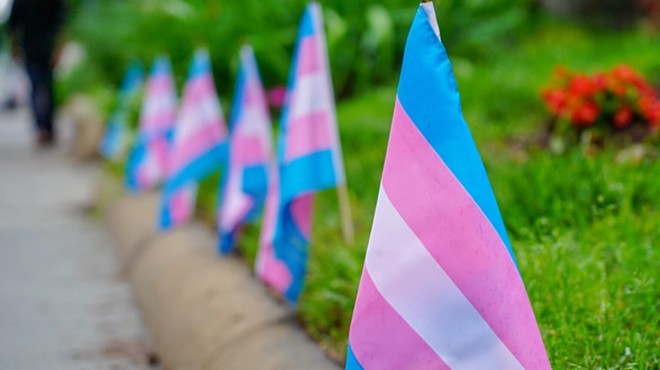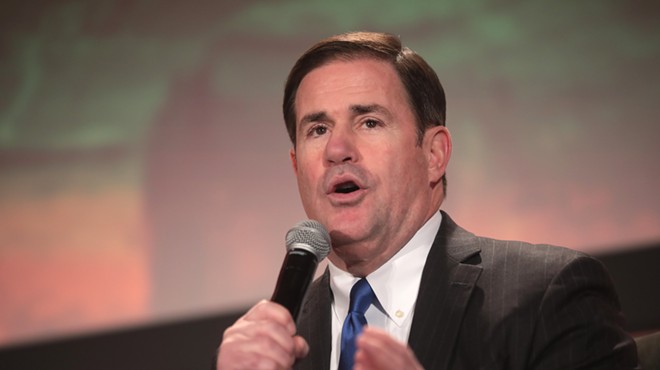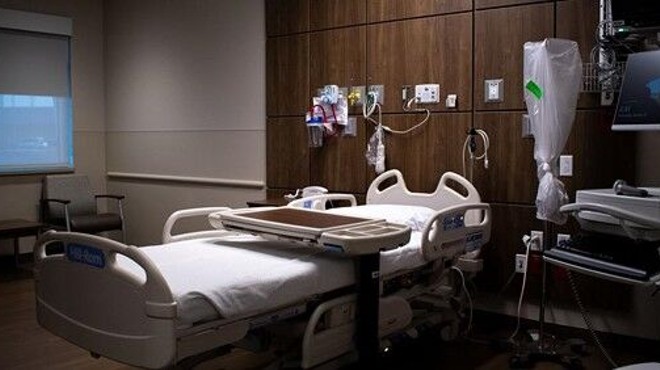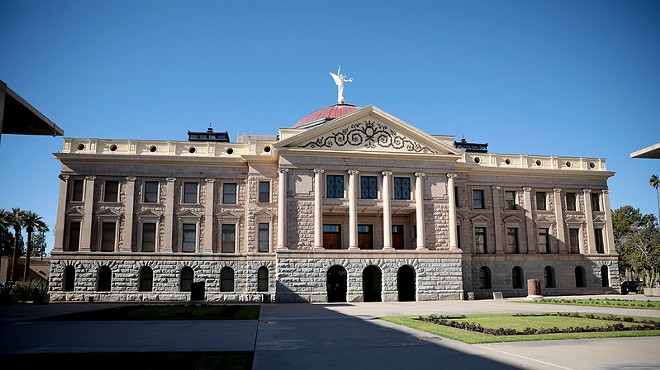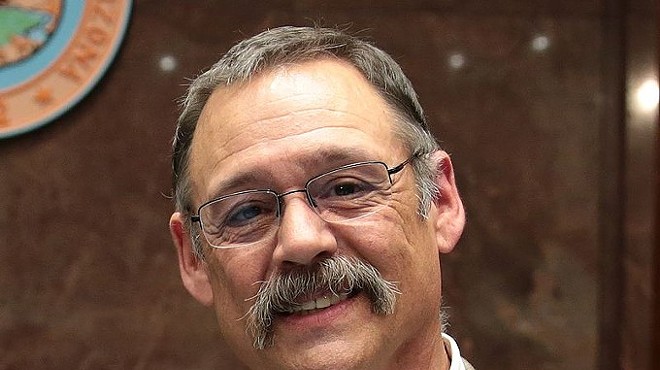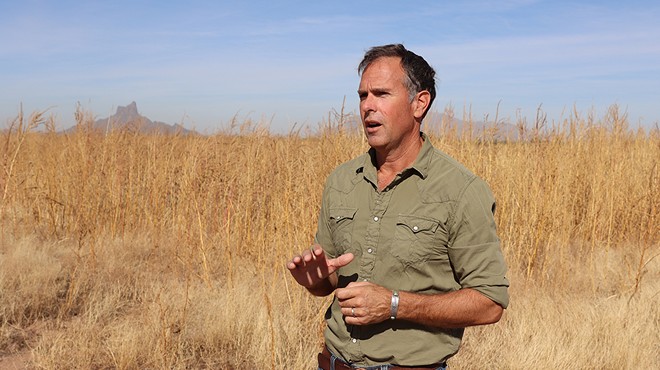Friday, July 8, 2011
Despite the Borderland Fires, Border-Crossers Keep Coming

- Courtesy of Joy and Ray Mendez
- This photo of the Horseshoe 2 Fire was taken from the back patio of the home of Joy and Ray Mendez, looking west down the canyon toward Portal.
We saw that phenomenon play out during the Horseshoe 2 Fire, which began in the Chiricahua Mountains on May 8, just south of a well-known drug camp at Burro Springs. The massive fire burned until June 25 and did enormous damage across parts of 222,954 acres.
Blogger and mountain resident Narca Moore-Craig attended a fire briefing June 17, at which Incident Commander Rich Harvey told the assembled group that he was conducting a back burn on the west side of the Chiricahuas when four UDAs “burst out of the flames” and ran past the firefighters.
Moore-Craig, an artist and biologist, wrote on June 18 that the firefighters are accustomed to clearing deer and cattle before firing a line. “But these folks don't live along the border, and they were surprised indeed by the illegals,” she wrote. “Harvey advised anyone igniting fire to yell, ‘¡Pásela!’ before firing, to try to shoo hidden people out of danger.”
Reached by e-mail, Harvey, Nevada’s deputy state forester, confirmed Moore-Craig’s account.
Dinah Davidson, a semi-retired biology professor, tells a similar story from Saturday, June 4. That morning, Border Patrol intercepted 14 people in Sulphur Canyon, south of Portal. The fire had passed through that area days before, but was still burning off to the northwest.
One of them, a Salvadoran, escaped, and Davidson ran into him as she was driving to her home in Cave Creek Canyon. He said his name was Andres. He was hungry and wanted to call his mother, but didn’t have a phone card, and Davidson doesn’t have long distance service. She says illegals often say they want to call their mothers, only to phone for a pickup ride to their destination.
She describes Andres as wide-eyed, frightened and confused. He first asked Davidson to call “imigra,” but quickly changed his mind. She told him to follow her car the one-tenth of a mile to her house, and she’d feed him. He sat in a corner of her porch and ate peanuts, fried eggs, yogurt, granola bar, watermelon, an apple, and some bean-and-rice leftovers from the fridge.
Andres said he lived in El Salvador with his mother and eight siblings. He had left there about eight days before en route to Washington state, where he had friends, and was discouraged to learn how many states he had to pass through to get there.
He said he had been very cold at night and had brought nothing to cover him. He carried a small backpack and wore a T-shirt, jeans and sturdy shoes. Davidson didn’t ask Andres how and when he crossed the border. “I’m not sure whether he would have been truthful in any case,” says Davidson. “Anyway, one can just walk around the border fence east of Douglas.”
Andres said he had been traveling with 13 others, who “abandoned him yesterday.” But that was false. Later, at the Portal Post Office, Davidson heard of the arrest of the other 13.
Davidson, who speaks Spanish, chatted with Andres, who complemented her on being “muy amiable.” Indicating the fire damage, she informed him that illegal immigrants were a big problem for the people in the area. He responded, “We die along the route.”
Andres fell asleep on a shady portion of the porch that Davidson had swept for him. Border Patrol arrived about 45 minutes later. Andres didn’t seem surprised when they woke him up. He took the large water bottle Davidson had given him and left with the agents, never looking at her again.
But Horseshoe 2 also brought a heavy-law enforcement presence to the Chiricahuas, an acknowledgement by authorities of a serious problem in those mountains.
On May 11, two days after the fire started, Ray Mendez was at the intersection of Stateline Road and Highway 80, near Rodeo, N.M., when he ran into a group of “police and troopers from both states (New Mexico and Arizona) armed to the teeth, wearing flak jackets and gathering for action where needed.”
When he asked about all the armament, the officers said it was to protect evacuated homes from break-ins by illegal aliens and drug runners. “They looked at us and said everyone knew illegals and drug runners had started the fire,” says Mendez, a 64-year-old former entomologist, who now makes his living creating museum exhibits. “They said, flat-out, 'We know who did this.'”
The Mendez family was evacuated twice, the first time the week of May 9. The second evacuation occurred on May 15 and this time they were gone nine days. They live five miles outside Portal.
Mendez and wife, Joy, both send out e-mail reports to friends around the country to tell them the truth about the borderlands. Ray says his mailings go out mainly to people he knew while growing up on the east side of Manhattan. He calls it — Tales From Far, Far Away Arizona.
On May 9, the day after the fire began, he wrote:
“Yesterday we had a fire set up in Horseshoe Canyon - now known as Horseshoe #2. I will keep the unfortunate nature of the drug and illegal alien paths and camps we as a people seem unwilling to do anything about out of this sending. I have had enough of this crap to last 4 lifetimes. The name is based on the unfortunate fact that last year we had an identical if, I believe, smaller deal.”
The ‘deal’ was the Horseshoe 1 Fire, which started on the same smuggling trail through Horseshoe Canyon on May 26, 2010, eventually burning 3,400 acres.
In addition to her e-mails, Joy looked into taking out a full-page ad in USA Today to tell the nation what is happening 50 miles north of Arizona’s border with Mexico. But it was too expensive. Joy says that when she describes what it’s like to live in a mountain range beset by illegal aliens and drug-smugglers, friends elsewhere usually commiserate, saying, "That must be a horrible place to live."
“I say, ‘No, it’s a wonderful place to live,’” says Joy. “But you need to know that what’s coming through here is on its way to your city, especially in terms of the drugs. So much of the country feels like this doesn’t affect them, but it does.”
She says the community thought it was making headway against the criminals after Rob Krentz’s murder, when attention turned to border security. And she says the Portal area has seen a reduction in smuggler break-ins, which had plagued the community.
"But then it gets buried again,” says Joy. “People need to understand this isn’t an immigration issue. The powers that be want to attribute this to immigration. But it’s a border-security issue.”
Ray, who favors drug-legalization, places blame for the problem on the government’s refusal “to do its job and close the borders.” In an e-mail on May 11, Ray wrote that the cost of fighting the Horseshoe 2 fire “will run into the millions and we as taxpayers will pay because our politicians have the testicular fortitude of chipmunks.”
The fire eventually cost almost $50 million to fight.


